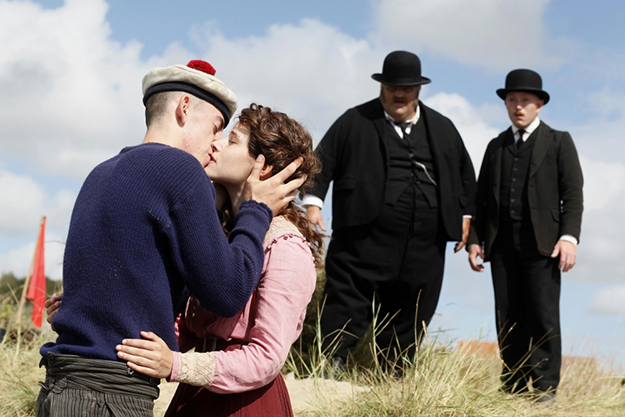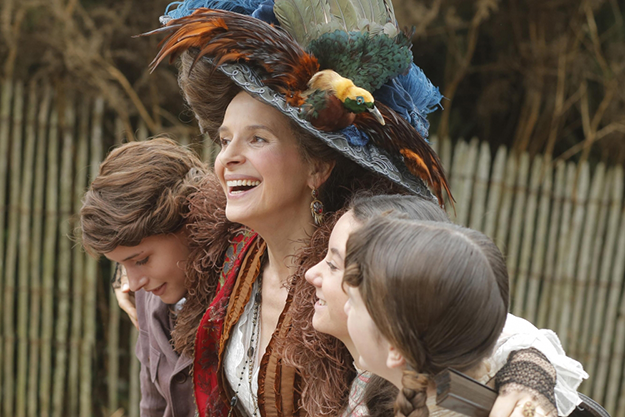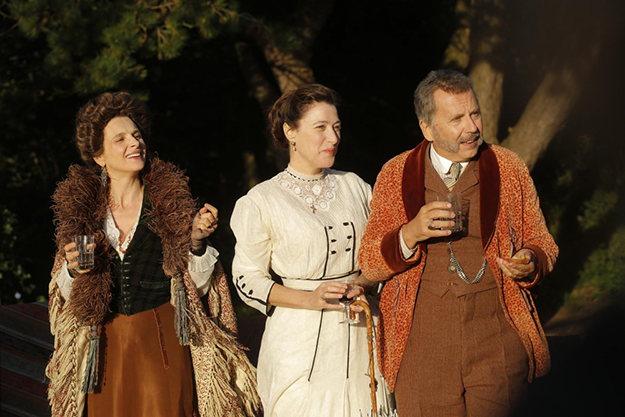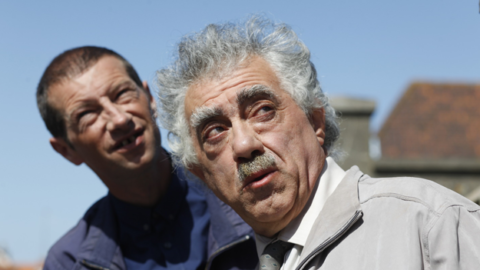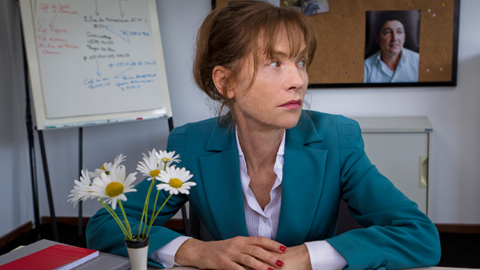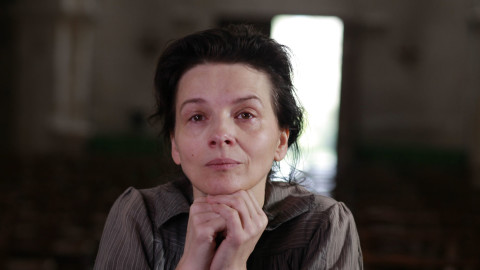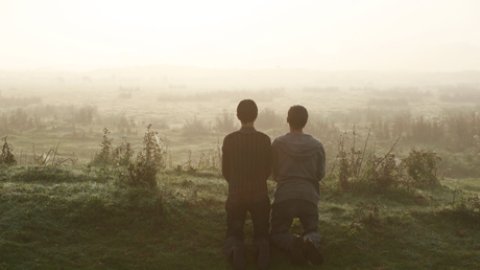Cannes Interview: Bruno Dumont
French filmmaker Bruno Dumont’s follow-up to his acclaimed four-part 2014 television film Li’l Quinquin, is a work of madcap inspiration—the second in a fresh comedically minded phase of the notoriously austere director’s career. Starring a roll call of seasoned actors—Juliette Binoche, Fabrice Luchini, Valeria Bruni Tedeschi, Jean-Luc Vincent—alongside a Dumontian clutch of amateurs, Slack Bay pits the upper-class Van Peteghems, vacationing for the summer on the coast of Northern France, against the working-class Bruforts, a lowly clan of fishermen. The Bruforts’ strange traditions and macabre rituals peg them as prime suspects in an ongoing series of unsolved disappearances. Investigating the crimes are a pair of detectives, Machin (Didier Desprès) and Malfoy (Cyril Rigaux), a Laurel and Hardy–type duo as prone to pratfalls as they are to misreading clues. Together these characters descend upon the Channel Coast for a carnivalesque romp inspired as much by the comedy stylings of cinema’s earliest stars as by detective yarns and the grotesquerie of early-20th-century expressionist painting.
Dumont sat for an interview soon after Slack Bay premiered in Competition at the Cannes Film Festival.
Though much of your prior work has featured darkly humorous elements, these last two films have been much more explicitly comedic. How are you conceptualizing these films differently from before?
If, as you say, it was dark then and there is light now, the light only comes from the darkness. The comedy is only the other side of the drama. Comedy comes from drama. I just realized these are different sides of the same thing. So I have no problem being in the same locations, with the same people, telling more or less the same story, but from the other side.
You once again shot this film in Northern France, on the Channel Coast, in an area around where you grew up. Can you talk about how some of the specific aspects of that region and that culture may have made their way into the film?
First of all this is the land of Flemish painting, which, as part of the expressionist trend in painting, has been a very important part of Western art. This is an era in which God was a significant subject. And while I don’t believe in God, I paint similar landscapes hoping for the light to arrive.
And if you compare Flemish painting to Italian painting, you can see that the cinematic industry of Italy is very much inspired by the legacy of these paintings. Their tradition and their view is much more idealistic, much more for the sake of the beauty, and to express beauty. Whereas our tradition—the Flemish tradition—deals more with an existential approach to things. So in trying to reach God through painting, the manner which is chosen is exaggeration, through a more grotesque approach, by making the features bolder. And this provides an aspect of existence that can help us reach God. The way I paint human beings relates to that tradition. So territory is also worth being worked on. It has a value in itself.
What about the film’s relation to early cinema and comedy? The story is set in the 1900s, and there are many references to classic comics—most obviously Laurel and Hardy, but I also sensed the influence of Mack Sennett and Max Linder, perhaps even Harold Lloyd.
In order to be able to make films I need to be nurtured—I need to watch films. And I don’t really find this inspiration in my contemporary directors. I would rather plunge into early cinema, which happens to be comic. All the names you mentioned are people who worked on the cinematic mechanism of how to make one laugh through film. I did watch a lot of Max Linder films, and the character in many of his films is this very bourgeois character who is made fun of. And so this aspect, which is a kind of anarchy of the time, as well as a surrealistic aspect, is where I feel you can sense this legacy in my own artistic journey.
Same with the soundtrack. Comedy is a matter of exaggeration, of making the features bolder than they are. And if that’s the case with the image and the costumes, then the sounds too must be exaggerated, so that we hear the sound—the music—of each character. And that’s not to say it’s not their sound anymore, but it allows us to have a closer look, or to hear better, the characters’ expressions. We do laugh at them, but we can hear them better.
Like Li’l Quinquin, there are still some rather dark moments and significant themes at work here, ones not uncommon to your prior films. Within this story of the Van Peteghems and the Bruforts, the film deals with, among other things, issues of class, wealth, and gender.
The material for me is always the same. If the material is dark or the material is serious, my approach might be different. But this is not a total shift. It’s just an evolution that seems all the more relevant, in that it allows me to get closer to something that is fundamental in human beings: the ridiculous aspects of our existence and our behavior. So I chose this material, and I put these two families in confrontation, as just their own beings. So I’m filming something that is sacred, and seeing how they can stumble, how they can all of a sudden lose their gravity. The comedy is what allows this fall.
The whole process, including directing the actors, is a process of distortion. First the actors act normally, or they walk normally. And then I ask them to do something abnormal. I tell them, “You’re not funny like this. You’re not making me laugh.” So I tell to them to be different—such as having them walk aside from how they would normally walk. And this is how Fabrice Luchini, for example, begins to offer a performance that is distorted. And that’s when the comedy happens.
You’ve worked with Juliette Binoche before, but this is your first film with multiple well-known actors, in addition to what appear to be amateurs in the role of the locals. How do you find it working with professional versus amateurs?
Let’s say it’s not the same tools, or maybe not the same aircraft. A professional actor is a Boeing 747: there are buttons everywhere, you’re not sure how you’re supposed to use them, and they’re extremely complex and sophisticated. Whereas a nonprofessional is like a single-motor plane, with just one handle—so it’s much easier.
Where did you find Brandon Lavieville (who plays the Bruforts’ oldest son, named Ma Loute)?
It’s always the same. I consider that there’s a correspondence between people and the place. So once I know where my location is, I always work with local people, local actors. So I settle there. I found Brandon in Calais, which is about 20 kilometers from the location of the film. But then we started working with unemployment offices. And from there we look at their faces. But it’s not only a matter of their face. They have to be photogenic, which you can tell immediately. Then once they’re on the screen I can see if they can express emotion, if they can act—if they can act somehow differently than they really are. If they have both these aspects, then I have them.
The Brufort family doesn’t really have to perform anything. They’re not that comic. They’re just themselves. So the acting I needed from them was more naturalistic, whereas the bourgeois family is much more exuberant in their being. So I needed actors to perform. I needed them to come in and invent something. It’s a matter of performance, and there are no people like this in real life. And if they do exist, they would never be in the film industry.
Jordan Cronk is a Los Angeles–based critic and programmer and contributor to Cinema Scope, Sight & Sound, Cineaste, Reverse Shot, and The Los Angeles Review of Books.



